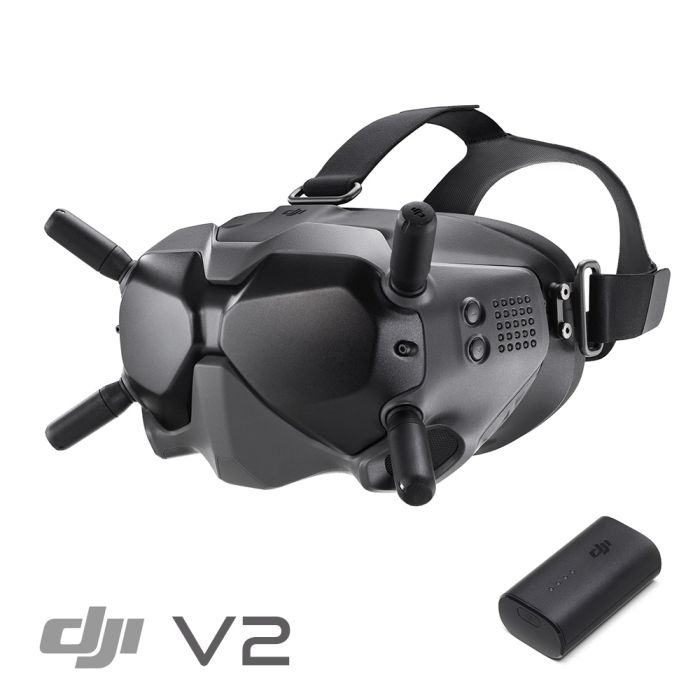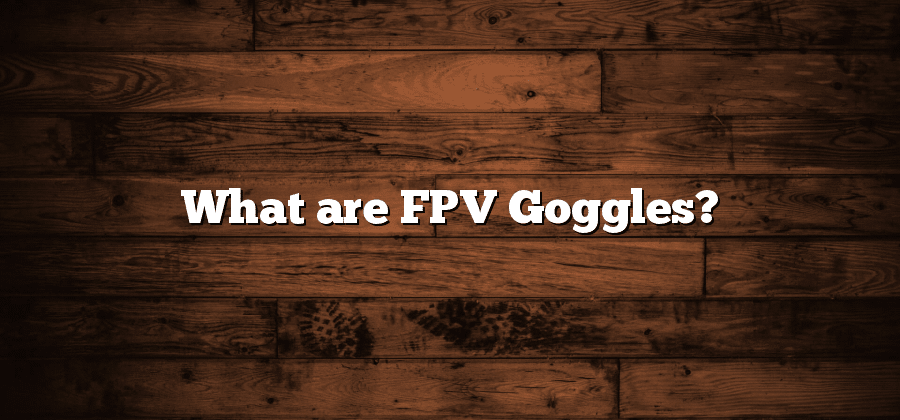For drone enthusiasts, racing pilots, and aerial cinematographers, FPV goggles have revolutionized the way they interact with their drones. As technological advancements continue to shape the world of unmanned aerial vehicles (UAVs), First-Person View (FPV) technology has emerged as an indispensable part of the drone piloting experience. This article dives deep into understanding what are FPV goggles, their functionality, and the features that make them an excellent tool for drone pilots.
Introduction to FPV Goggles

FPV goggles are specialized devices worn by drone pilots to see exactly what the drone’s camera captures in real-time, essentially putting the user in the drone’s ‘cockpit’. This immersive perspective is what gives FPV its name – First-Person View. By creating an immersive flying experience, FPV goggles have become integral to various drone applications, from racing and freestyle flying to photography and videography.
Components of FPV Goggles
FPV goggles primarily comprise three main parts: the screens, the receiver, and the power supply. The screens or display panels are where the video from the drone camera is displayed. The receiver captures the video signal transmitted from the drone, and the power supply, typically a battery, provides the necessary power for the device.
Functioning of FPV Goggles
Understanding how FPV goggles work involves learning about the interplay between these components.
Signal Transmission
When a drone is in flight, its camera captures the surrounding visuals and transmits them as a radio signal. This transmission usually happens via two methods: analog or digital. Analog signals are traditional and offer low latency, whereas digital signals provide better image quality.
Signal Reception and Display
The goggles receive the transmitted signal through the receiver. Once the signal is received, it is converted back into video data, which is then displayed on the screens inside the goggles. The use of two screens, one for each eye, creates a stereoscopic view, giving the pilot a 3D perception and an immersive flying experience.
Key Features of FPV Goggles
Now that we understand the basic concept and operation of FPV goggles let’s discuss some of the crucial features to consider when choosing a pair.
Resolution
The resolution of the screens inside the goggles significantly affects the video quality. Higher resolutions offer more details, making it easier to navigate the drone. Common FPV goggles resolutions include 720p and 1080p, though some premium models offer even higher resolutions.
Field of View (FoV)
The FoV of FPV goggles determines how immersive the flying experience will be. It’s the extent of the observable world you see at any given moment. A larger FoV (around 30°-50°) offers a more immersive experience but may decrease the image sharpness.
Comfort and Ergonomics
Comfort is a critical factor to consider, especially for longer flight sessions. These goggles should have a comfortable fit around the eyes and head, and the weight should be evenly distributed. Features like adjustable straps and foam padding can enhance comfort.
Latency
Latency refers to the delay between the camera capturing an image and the image being displayed in the goggles. Lower latency is crucial for drone racing and other applications where real-time control is necessary.
Receiver Sensitivity
Receiver sensitivity impacts how well the goggles can pick up the transmitted signal. More sensitive receivers can maintain a clear image at greater distances or in environments with many obstacles.
Advanced FPV Goggle Features
As FPV technology continues to advance, manufacturers are incorporating more sophisticated features into their goggles.
Head Tracking
Some FPV goggles come equipped with head-tracking technology. This feature allows the camera on the drone to mimic the movements of the pilot’s head, providing a more intuitive and immersive flying experience.
On-Screen Display (OSD)
An OSD overlays flight data onto the live video feed, providing crucial information such as battery life, altitude, speed, and GPS data directly on the display inside the goggles.
DVR Functionality
Some goggles include a built-in digital video recorder (DVR). This feature allows pilots to record their flight directly from the goggles, making it an excellent feature for those who want to replay their flights for analysis or share their experiences.
Conclusion
In conclusion, FPV goggles have opened up a new realm of possibilities in the world of drone piloting. Whether it’s drone racing, aerial photography, or just casual flying, these devices offer an immersive experience that is unmatched. As technology continues to evolve, drone enthusiasts and professionals alike can look forward to even more exciting advancements in FPV technology.



Recent Comments